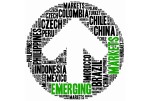SSGA-SPDR: Emerging Market Debt left out in the cold
SSGA-SPDR: Emerging Market Debt left out in the cold
Emerging market debt had a volatile first three quarters of 2021. Returns have been weighed on by concerns around COVID, high inflation forcing central banks to tighten policy, and a resurgent USD. Fears over the upcoming Federal Reserve taper have done their bit to keep investors on the sidelines.
The first half of 2021 saw certain pitfalls for investors in emerging market (EM) debt. The first three months of the year delivered negative returns as the snap higher in US Treasury yields and the USD, coupled with rising COVID-19 infection rates in EM, saw investors turn cautious on EM assets.
The end result is that, currently in the broader market where credit spreads have compressed, yields on EM debt remain at relatively normal levels from a historical perspective. The yield to worst on the Bloomberg Emerging Markets Local Currency Liquid Index is 4.90% in line with the 5-year average.
The obvious comparison is with developed market high yield strategies and, for the Bloomberg US Corporate High Yield Bond Index, the current yield of 4.20% is well below 5.80% 5-year average. Indeed, the spread between these two indices is 70bp, against a 5-year average of -85bp.
Aside from the appeal of a higher yield, there are reasons to expect long-term returns from EM debt. see Emerging Market Debt: Unfulfilled Potential for a more in-depth discussion on the below.
- Signs that inflation may be starting to top out (or at least moderate over the coming six months, as suggested by PriceStats®) should relieve some pressure on EM central banks to raise rates. Indeed, there are already signals that momentum in central bank policy tightening may be starting to turn. Figure 2 below shows the balance of central banks raising rates versus cutting them for the 19 central banks in the Bloomberg Emerging Markets Local Currency Liquid Index. While the 12-week average is now in positive territory, it has started to decline. With a significant amount of policy tightening already priced into the curve , signs that inflation pressures are easing could result in a flatter profile for future interest rate rises, which in turn would support bonds.
- As at the end of September 2021, the USD was expensive versus EM FX. The model of the long-term value of currencies, as run by State Street Global Advisors, calculates that the USD was 7.6% expensive to the basket of currencies that makes up the Bloomberg Emerging Markets Local Currency Liquid Index. This is its richest level in a year.
The above factors support EM debt. There are no guarantees that this scenario will play out during the coming quarter but there could be some potential triggers for better performance. EM debt investors have been nervous of Fed actions since the 2013 Taper Tantrum hit returns, so weaker economic numbers, pushing out the date of the taper, may support risk appetite.
Alternatively, if the Fed starts to cut its bond purchases and the markets react favourably, fears of an aggressive back-up in Treasury yields and spike in the USD would diminish. Damping concerns over USD strength, in particular, should bolster investor confidence in EM debt returns.
EM Central Bank Hike/Cut Momentum is Starting to Turn
The China Factor
A key support for EM debt should continue to come from China. Making up around 10% of the Bloomberg Emerging Markets Local Currency Liquid Index, Chinese bonds have turned in the strongest performance of any country bonds year to date, returning 5.8%.
Chinese bonds are a useful risk diversifier, often not behaving like the majority of EM bonds. This was evident during the peak of the COVID crisis and has continued to be the case, with local Chinese bonds actually rallying in Q3 on the back of the deteriorating growth outlook as the September manufacturing PMI dropped below 50.
There is a feeling that the People’s Bank of China will continue to focus on adding liquidity rather than cutting rates at this juncture. However, wider contagion from the problems at Evergrande, coupled with persistent weakness in economic indicators, may cause the market to speculate on the possibility of a rate cut.
The CNY has also contributed to positive returns year to date, which is unusual in the context of the USD rally seen in 2021. Some support for the currency would have come from the favourable flow story of Chinese bonds.
Data from the Institute of International Finance suggests that just over 50% of the $ 200 billion of foreign investment flows into EM debt seen so far in 2021 have moved into Chinese bonds.6 Overseas investment is expected to continue with the expansion of the FTSE World Government Bond Index (WGBI), which is set to include China from October 2021.









